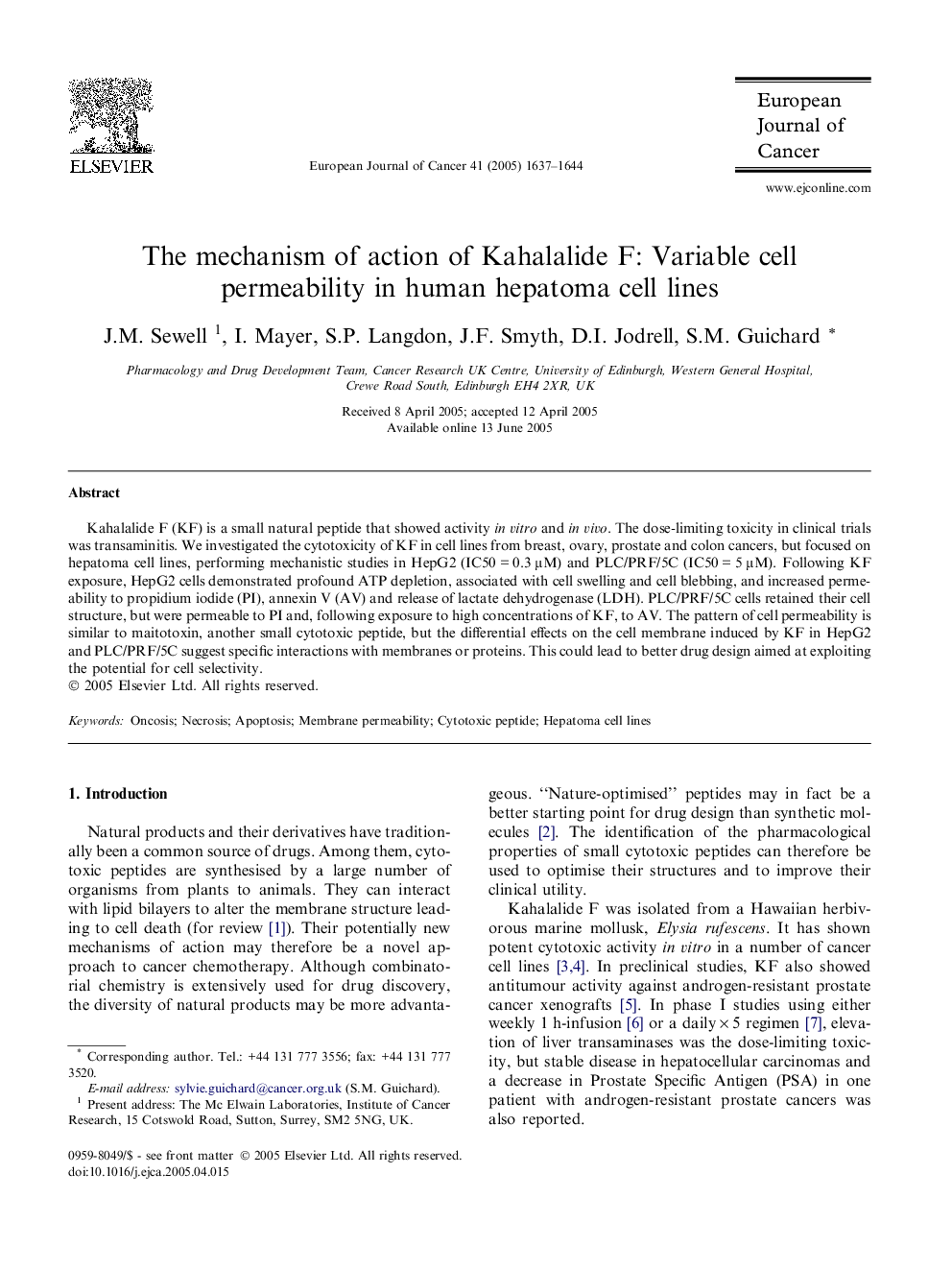| Article ID | Journal | Published Year | Pages | File Type |
|---|---|---|---|---|
| 9905726 | European Journal of Cancer | 2005 | 8 Pages |
Abstract
Kahalalide F (KF) is a small natural peptide that showed activity in vitro and in vivo. The dose-limiting toxicity in clinical trials was transaminitis. We investigated the cytotoxicity of KF in cell lines from breast, ovary, prostate and colon cancers, but focused on hepatoma cell lines, performing mechanistic studies in HepG2 (IC50 = 0.3 μM) and PLC/PRF/5C (IC50 = 5 μM). Following KF exposure, HepG2 cells demonstrated profound ATP depletion, associated with cell swelling and cell blebbing, and increased permeability to propidium iodide (PI), annexin V (AV) and release of lactate dehydrogenase (LDH). PLC/PRF/5C cells retained their cell structure, but were permeable to PI and, following exposure to high concentrations of KF, to AV. The pattern of cell permeability is similar to maitotoxin, another small cytotoxic peptide, but the differential effects on the cell membrane induced by KF in HepG2 and PLC/PRF/5C suggest specific interactions with membranes or proteins. This could lead to better drug design aimed at exploiting the potential for cell selectivity.
Related Topics
Life Sciences
Biochemistry, Genetics and Molecular Biology
Cancer Research
Authors
J.M. Sewell, I. Mayer, S.P. Langdon, J.F. Smyth, D.I. Jodrell, S.M. Guichard,
